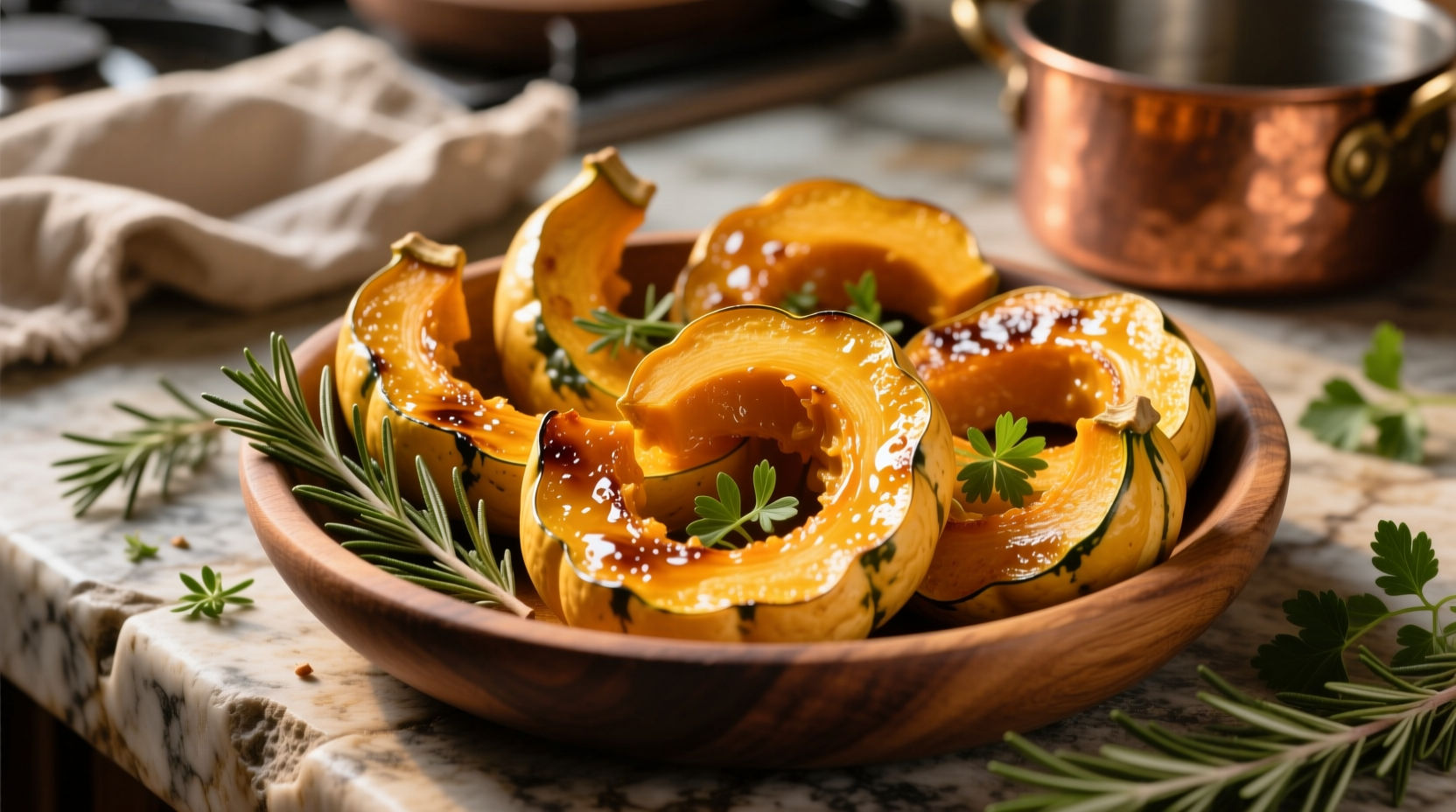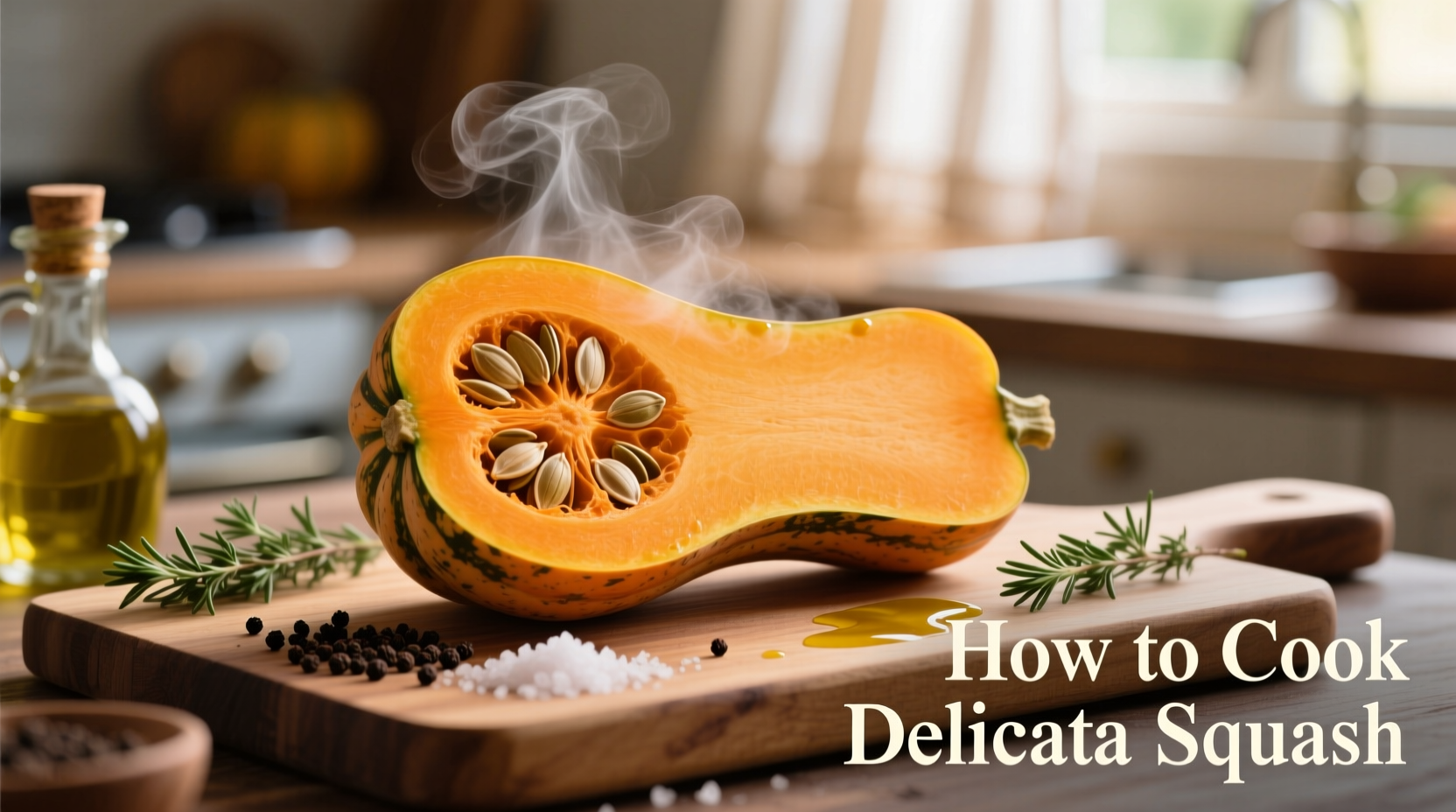Why Delicata Squash Deserves a Spot in Your Kitchen
Often called "sweet potato squash" for its similar flavor profile, delicata squash (Cucurbita pepo) has gained popularity as the most approachable winter squash. Its cream-colored skin with green stripes hides tender, yellow-orange flesh that doesn't require peeling. According to USDA FoodData Central, one cup of cooked delicata squash provides 43 calories, 10g carbohydrates, 2g fiber, and 15% of your daily vitamin C needs—making it a nutrient-dense addition to any meal.

Selecting and Storing Your Squash
Choose firm squash with consistent color and no soft spots. The ideal specimen feels heavy for its size—typically 1-2 pounds. Unlike other winter squashes that last months, delicata has a thinner rind and should be used within 2-3 weeks. Store in a cool, dark place (55-60°F) away from direct sunlight. Refrigeration isn't recommended as cold temperatures degrade flavor and texture.
Preparation: The Edible Skin Advantage
The biggest time-saver with delicata squash? You don't need to peel it. Simply wash thoroughly under running water using a vegetable brush to remove any dirt from the ridges. For cutting:
- Trim both ends with a sharp chef's knife
- Stand upright and carefully slice in half lengthwise
- Use a spoon to scrape out seeds and stringy pulp
- Cut into ½-inch half-moons or 1-inch cubes
Safety tip: Place a damp towel under your cutting board to prevent slipping. Delicata's cylindrical shape makes it more stable to cut than round squashes.
Master Method: Perfect Roasted Delicata Squash
Roasting concentrates natural sugars through the Maillard reaction (which occurs optimally between 285-330°F), creating those desirable caramelized edges. Follow these chef-tested steps:
| Cooking Method | Temperature | Time | Best For |
|---|---|---|---|
| Standard Roasting | 400°F | 25-30 min | Side dishes, salads |
| High-Heat Roasting | 425°F | 20-25 min | Crispy edges, quick meals |
| Low & Slow | 325°F | 35-40 min | Stuffed squash, tender texture |
Step-by-Step Roasting Instructions
- Preheat oven to 400°F with rack in center position
- Toss 2 lbs squash pieces with 1½ tbsp olive oil, ½ tsp salt, and ¼ tsp black pepper
- Spread in single layer on parchment-lined baking sheet
- Roast 15 minutes, flip pieces, then roast 10-15 minutes more
- Test doneness: fork should slide in easily; edges should be golden brown
Pro tip: For extra caramelization, sprinkle with 1 tsp maple syrup during the last 10 minutes of cooking. Avoid overcrowding the pan—use two sheets if needed—as steam prevents proper browning.
Alternative Cooking Methods
Sautéed Delicata Squash
Ideal for weeknight meals, sautéing takes just 15 minutes:
- Heat 1 tbsp oil in cast-iron skillet over medium-high
- Add 2 cups cubed squash in single layer
- Cook 8-10 minutes without stirring to develop crust
- Stir and cook 3-5 minutes more until tender
- Add 1 minced garlic clove in last 2 minutes
Stuffed Delicata Halves
For a complete meal, try this seasonal stuffing:
- Roast squash halves at 375°F for 20 minutes
- Fill with mixture of cooked quinoa, dried cranberries, toasted pecans, and goat cheese
- Return to oven 10-15 minutes until filling is heated through
Flavor Pairings That Shine
Delicata's mild sweetness pairs beautifully with:
- Herbs: Sage, thyme, rosemary (add woody herbs at start, delicate herbs at end)
- Spices: Cumin, smoked paprika, cinnamon (¼ tsp per pound)
- Acids: Lemon juice, apple cider vinegar (1 tbsp finish)
- Complements: Pecans, blue cheese, pomegranate seeds
When Methods Don't Work: Context Boundaries
While versatile, delicata squash has limitations:
- Avoid boiling: High water content makes it turn mushy (unlike denser butternut)
- Not ideal for purees: Lower starch content than other winter squashes yields thinner texture
- Don't microwave whole: Uneven heating risks bursting due to trapped steam
Troubleshooting Common Issues
Soggy results? Your oven temperature may be too low—use an oven thermometer to verify. Excess moisture comes from overcrowded pans or skipping the flip step.
Bitter taste? Rare but possible if the squash was harvested too young. Counter with ½ tsp honey or maple syrup in your seasoning mix.
Uneven cooking? Cut pieces to uniform size (½-inch thick for half-moons) and rotate the baking sheet halfway through cooking.
Seasonal Timeline: From Obscurity to Staple
Delicata squash was nearly extinct by the 1940s until seed saver organizations revived it. Its journey to popularity follows this pattern:
- 1980s: Found primarily in specialty seed catalogs
- 2000s: Appeared in farmers' markets and upscale grocers
- 2010s: Featured in cooking magazines as "the squash you don't need to peel"
- Today: Available in 85% of major supermarkets during fall/winter months











 浙公网安备
33010002000092号
浙公网安备
33010002000092号 浙B2-20120091-4
浙B2-20120091-4